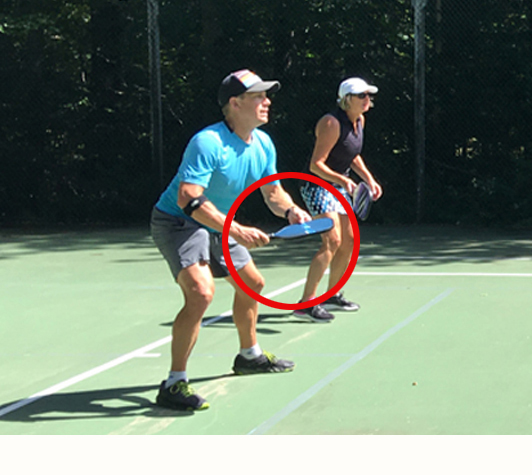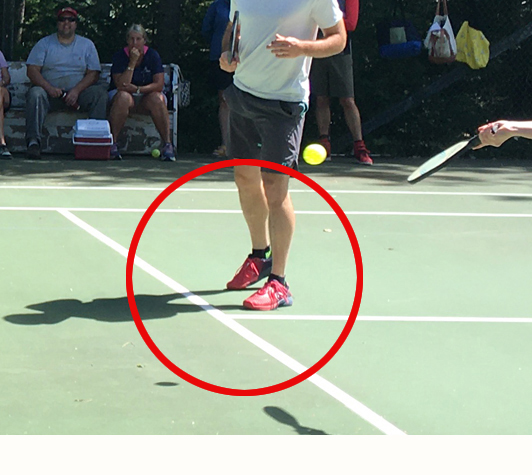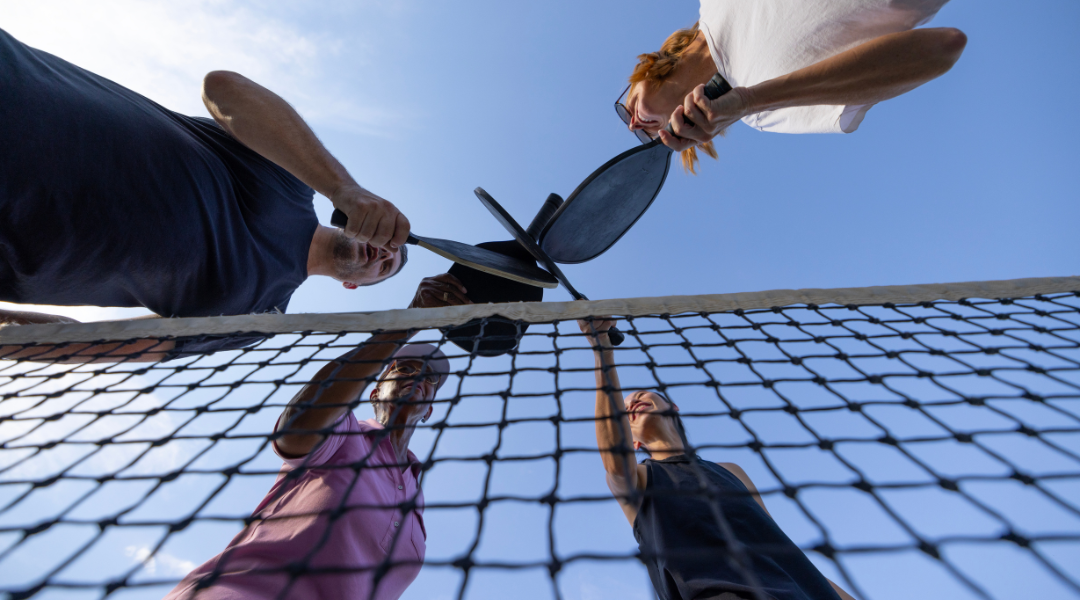Today, we’re going to talk about some common mistakes that beginners often make when starting out in pickleball. By identifying and avoiding these mistakes, you’ll be well on your way to improving your game and having more fun on the court. So, let’s dive in!
One of the first mistakes many beginners make is improper grip and paddle handling. It’s essential to use the correct grip and hold the paddle properly to achieve better control and accuracy on your shots.
Correct Grip Technique:
Continental Grip: This is the most common grip used in pickleball. Hold the paddle as if you are shaking hands with it. Your index finger should be slightly separated from the other fingers, giving you more control. You may use the “V” grip which is the continental grip with your pointer finger pointed upwards towards or on the back of the paddle. Your opposite hand should rest on the back of the paddle. Do not rest your opposite hand on top of the paddle or around the handle as these two things create issues with certain stroke mechanics.
Be sure to start in a ready position that is neutral. It will make you quicker to get to any shot you need to. By tilting the paddle towards the backhand you’ll be faster to block but it will slow down your forehand volley and will cause issues with an offensive backhand punch volley where your paddle tip is above the ball striking down on it. Anything you do with grip or ready position that isn’t neutral and facing the ball on the opposite side of the court will cause issues. You may see Pros holding their grip with a slight tilt, however they are PROS they have lightning-fast reflexes.


Another common mistake is poor footwork and positioning on the court. Proper footwork is essential for getting into position to hit the ball effectively and move around the court efficiently.
Basic footwork techniques:
By practicing these footwork techniques, you’ll be able to cover the court more effectively and be in the right position to make your shots.
Many beginners tend to overhit the ball, resulting in a lack of control and accuracy. It’s important to focus on control rather than power, especially when starting out.
Tips for controlled shots:
By emphasizing control over power, you’ll reduce errors and improve your overall consistency on the court. Soft shots at your opponent’s feet will set you up for success. Your opponent has to lift the low soft ball up creating an offensive opportunity for you.
The non-volley zone, or the kitchen, is often overlooked by beginners. Stepping into the NVZ when volleying can result in faults and lost points. Just remember if you hit a shot at the kitchen line that feels super easy… chances are you had a foot fault in the kitchen. That said, you should still position yourself as close to the line as possible as that gives you the nest offensive opportunities and doesn’t expose your feet to your opponents.
Strategies for NVZ Awareness:
Understanding and respecting the NVZ rules will help you avoid unnecessary faults and keep the game fair.
Communication is key in pickleball, especially when playing doubles. Many beginners forget to communicate with their partner, leading to confusion and missed opportunities. Always communicate on middle balls and lobs!
Communication Tips:
Good communication ensures that you and your partner work as a cohesive unit, covering the court efficiently and avoiding collisions. Always let your partner know if you have an injury that prevents you from moving quickly. If they know that ahead of time they will be more prepared to cover you.
Patience is a virtue in pickleball, but many beginners struggle with it. They may rush their shots or make hasty decisions, resulting in errors. All shots in pickleball are not meant to be winners. Keep in mind that you need set up shots to get you the correct ball to attack. Have a plan. The more you have a plan versus simply reacting the better your shots will be.
Tips for Patient Play:
By being patient and waiting for the right moments to strike, you’ll play smarter and more consistently.
Another common mistake is a lack of strategy and game awareness. Beginners may focus solely on hitting the ball without considering their opponent’s positioning or thinking ahead. Have a plan versus reacting. Beginners should have a plan or target for their serve and return. Once you’ve mastered that try planning what type of 3rd shot you’ll hit prior to the ball coming to you. It’s always a good plan to hit your opponent in the feet. Avoid looking at faces as your ball will go where you’re looking.
Basic Strategy Tips:
Use soft shots at your opponent’s feet to set you up for success.
By incorporating these strategic elements into your game, you’ll be able to outlast your opponents and win more points.
Proper warm-up is crucial in pickleball, but many beginners skip it altogether. Warming up helps prevent injuries and prepares your body for the demands of the game.
Simple Warm-Up Exercises:
A good warm-up routine will help you play better and reduce the risk of injuries.
Many beginners make the mistake of not seeking feedback or coaching to improve their game. Feedback from experienced players or coaches can help identify areas for improvement and accelerate your progress. If you continue to hit strokes improperly you’ll develop muscle memory and the bad habits you have made will be harder to break.
Benefits of Seeking Feedback:
Actively seeking feedback will help you progress faster and become a more skilled player.
Lastly, don’t forget to have fun! While it’s essential to work on your skills and improve your game, pickleball is ultimately about enjoying yourself and having a good time with friends.
Tips for Enjoying he Game:
By keeping the fun in the game, you’ll stay motivated and continue to enjoy the sport for years to come.
In conclusion, avoiding these common beginner mistakes will set you on the path to becoming a better pickleball player. Focus on your grip and paddle handling, improve your footwork and positioning, control your shots, respect the NVZ, communicate with your partner, be patient, strategize, warm up properly, seek feedback, and most importantly, have fun! By doing so, you’ll not only improve your game but also enjoy the wonderful sport of pickleball to the fullest.
If you find this blog helpful, please share it with your pickleball friends and stay tuned for more tips, tricks, and secrets to elevate your pickleball game. Until next time, keep swinging, stay safe, and have fun on the court!

IPTPA Master level pickleball pro, aiming to enhance the skills of players globally by making the game more enjoyable, effective, and fun.
